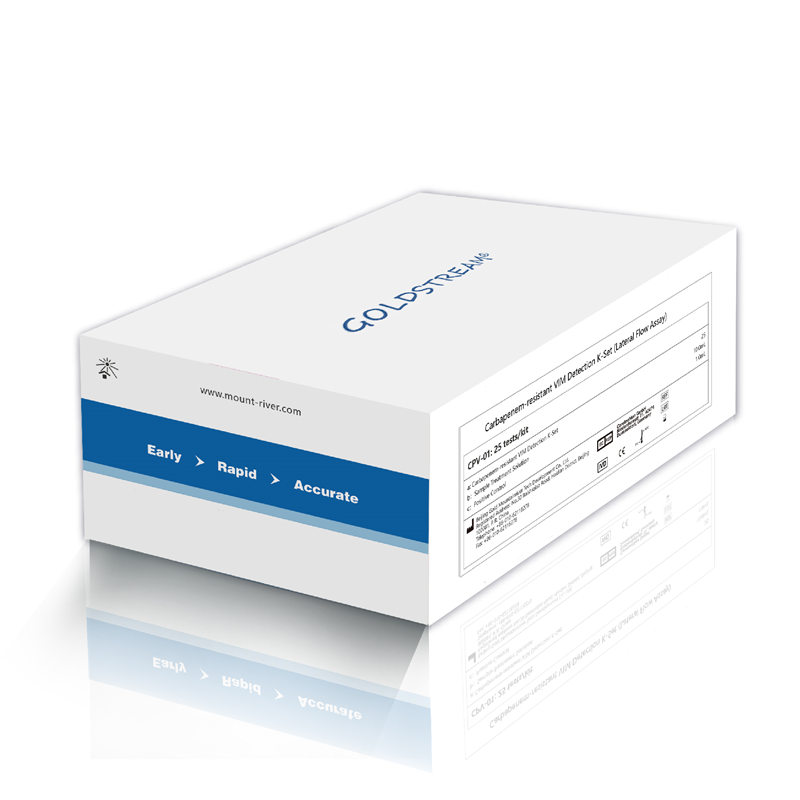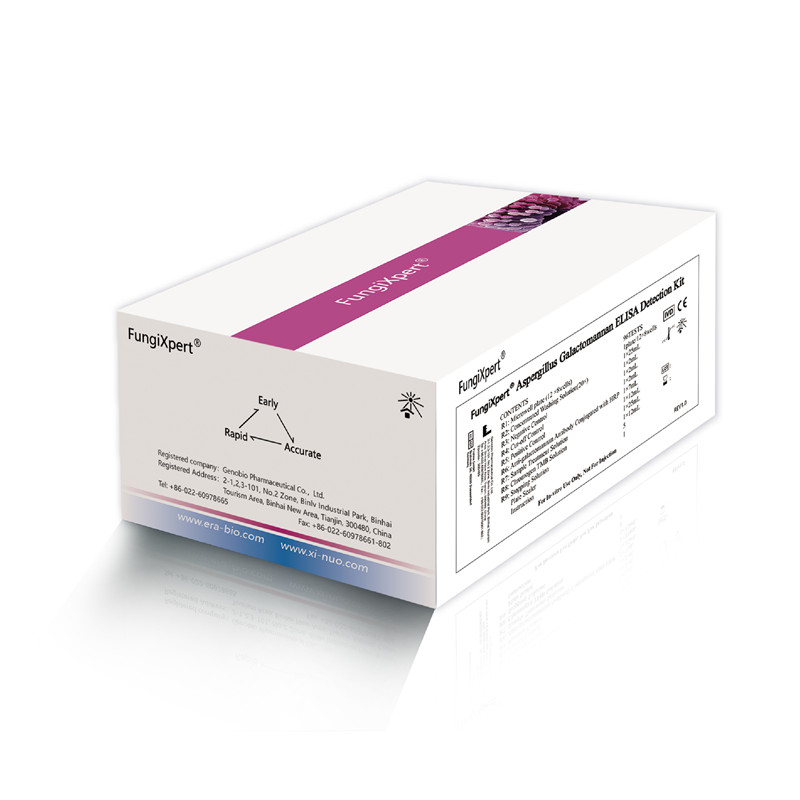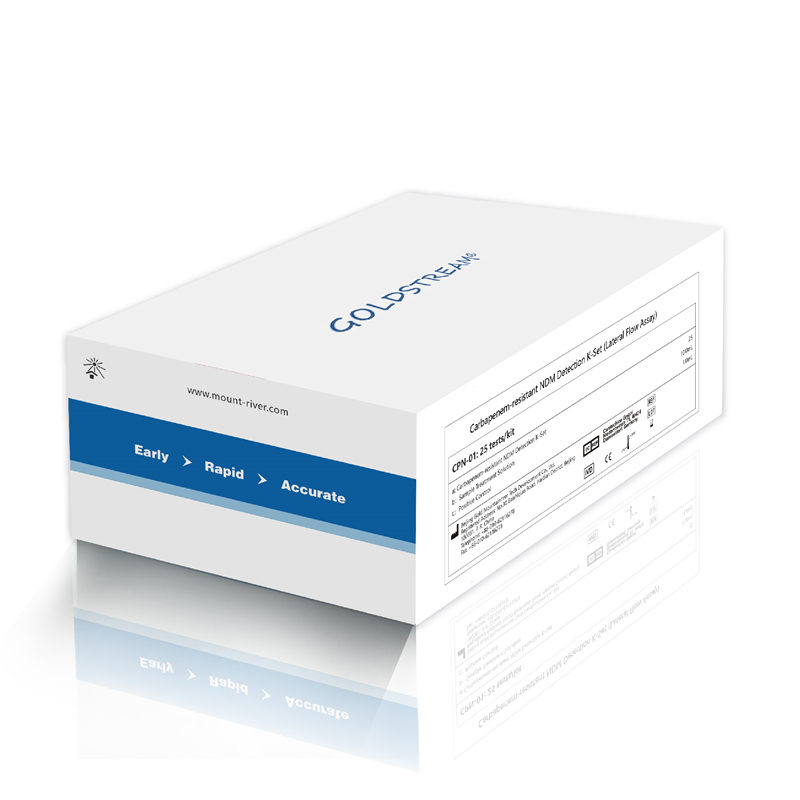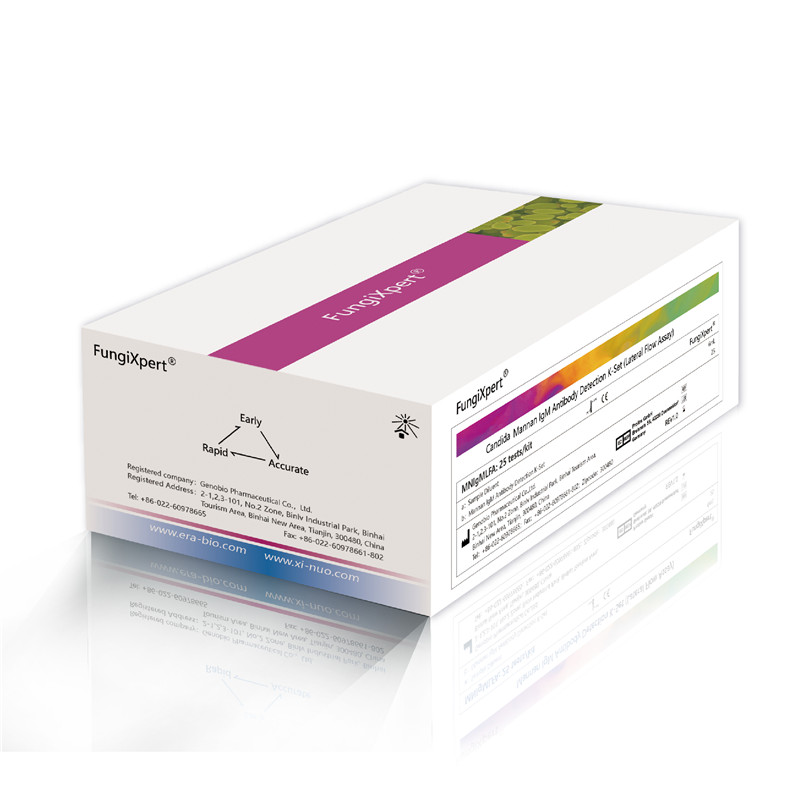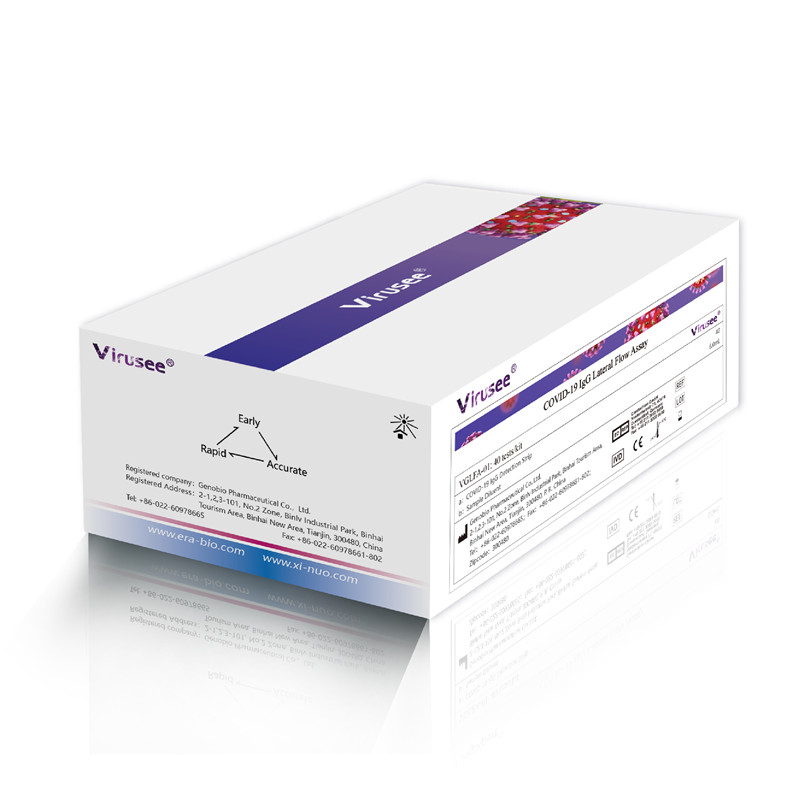Carbapenem-resistant VIM Detection K-Set (Lateral Flow Assay)
Product Introduction
The Carbapenem-resistant VIM Detection K-Set (Lateral Flow Assay) is an immunochromatographic test system intended for the qualitative detection of VIM-type carbapenemase in bacterial colonies. The assay is a prescription-use laboratory assay which can aid in the diagnosis of VIM-type carbapenem resistant strains.
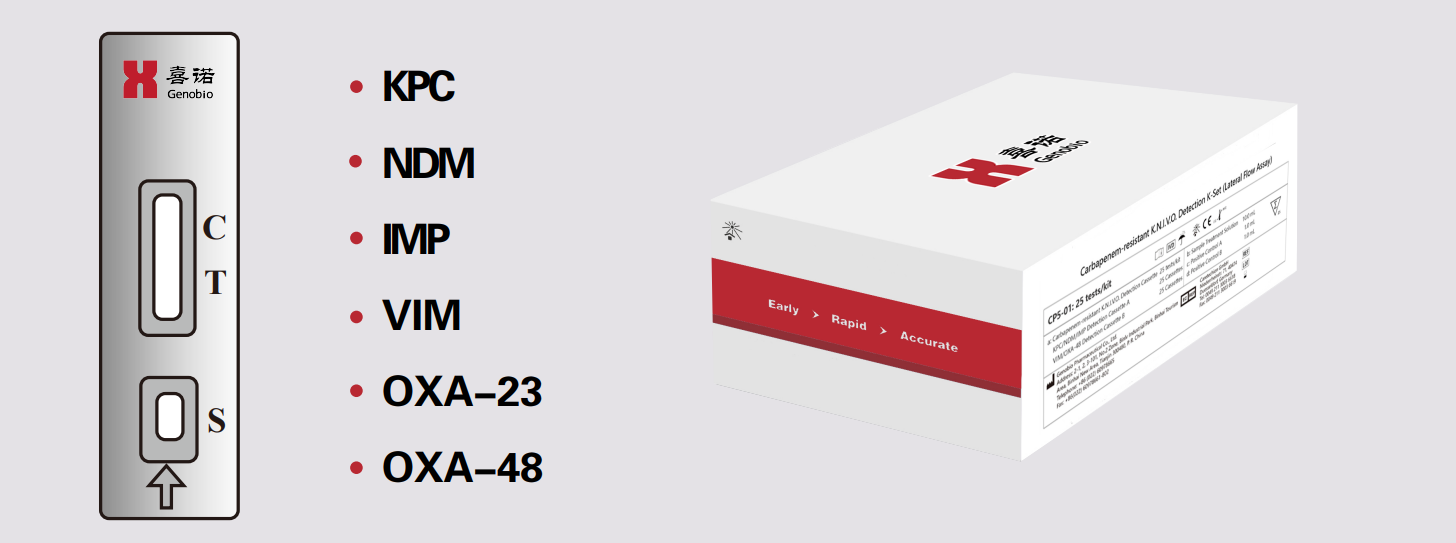
Characteristics
|
Name |
Carbapenem-resistant VIM Detection K-Set (Lateral Flow Assay) |
|
Method |
Lateral Flow Assay |
|
Sample type |
Bacterial colonies |
|
Specification |
25 tests/kit |
|
Detection time |
10-15 min |
|
Detection objects |
Carbapenem-resistant Enterobacteriaceae (CRE) |
|
Detection type |
VIM |
|
Stability |
The K-Set is stable for 2 years at 2°C-30°C |
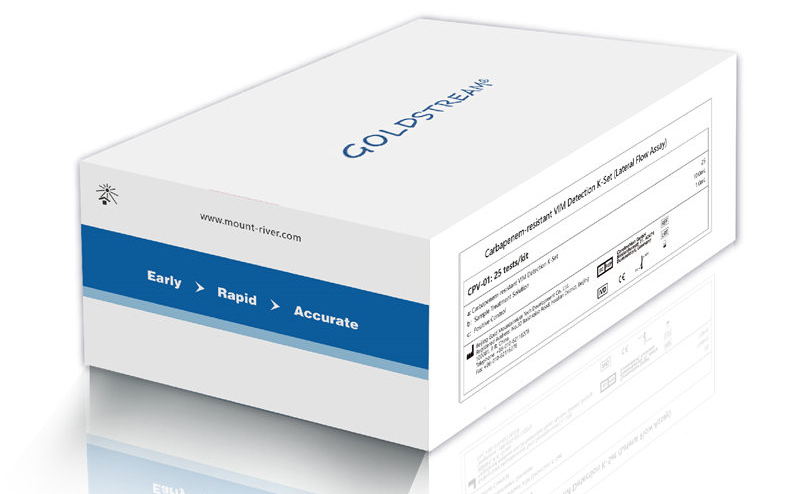
Advantage
- Rapid
Obtain result within 15 min, 3 days earlier than traditional detection methods - Simple
Easy to use, ordinary laboratory staff can operate without training - Accurate
High sensitivity and specificity
Low detection limit: 0.20 ng/mL
Able to detect most of the common subtypes of VIM
- Intuitive result
There is no need for calculation, visual reading result - Economic
Product can be transported and stored at room temperature, reducing costs
The importance of CRE test
Carbapenem-resistant Enterobacteriaceae (CRE) are part of a group of germs that live in the intestines of some people. They're related to E. coli, but it is normal to have E. coli in your intestine and stool. The problem happens when these germs mutate and become resistant to antibiotics. Some CRE are resistant to so many medications that they are untreatable, and up to half of patients infected may die. This is particularly worrisome because carbapenems used to be one of the only antibiotics that could successfully treat another Enterobacter “superbugs.”
Common methods taken to control the spread of CRE:
- Strict CRE infection monitoring
- Patients’ isolation before and during hospitalization
- Take caution when prescribing antibiotics, avoid drug abuse
- Use sterile techniques, wash hands and avoid being inside ICU for too long
……
That is why the early typing of CRE subtypes are important in clinical CRE control. The rapid and accurate CRE test kits can help with medical prescription, patient management, thus minimize the increase speed of antibiotics resistance.
VIM-Type Carbapenemase
Carbapenemase is a type of β-lactamase that can at least significantly hydrolyze imipenem or meropenem, including A, B, D three types. In these types, Class B are metallo-β-lactamases (MBLs), including carbapenemases such as IMP, VIM and NDM, which were mainly found in Pseudomonas aeruginosa, Acinetobacteria and Enterobacteriaceae bacteria. Verona Integron-encoded Metallo-beta-lactamase (VIM) is the most frequently-encountered carbapenemase in P. aeruginosa3. Among variants, the VIM-2 metallo-beta-lactamase exhibits the broadest geographical distribution, including on the European continent.
Operation
- Add 5 drops of sample treatment solution
- Dip bacterial colonies with a disposable inoculation loop
- Insert the loop into the tube
- Add 50 μL to the S well, wait for 10-15 minutes
- Read the result
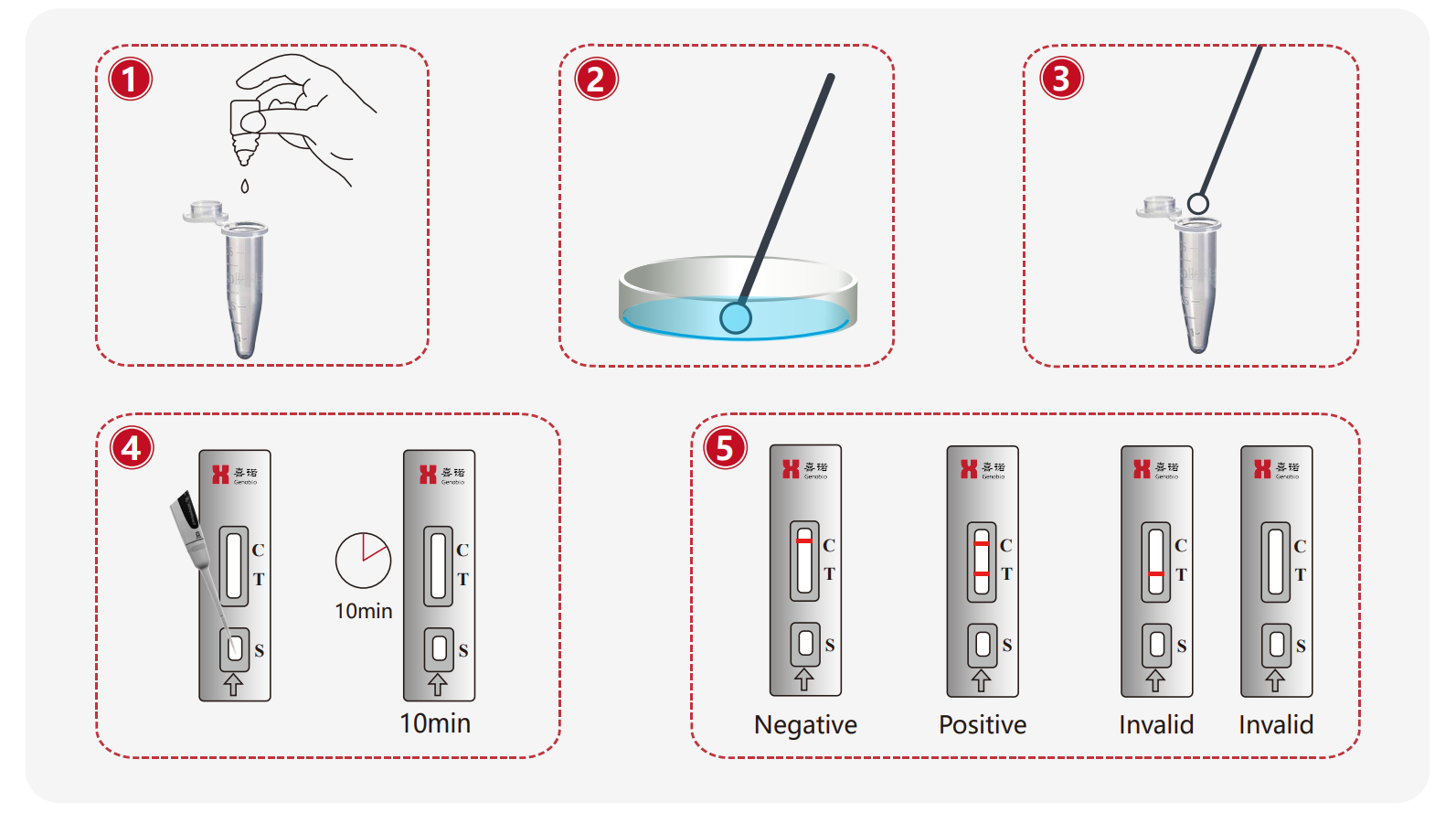
Order Information
|
Model |
Description |
Product code |
|
CPV-01 |
25 tests/kit |
CPV-01 |

